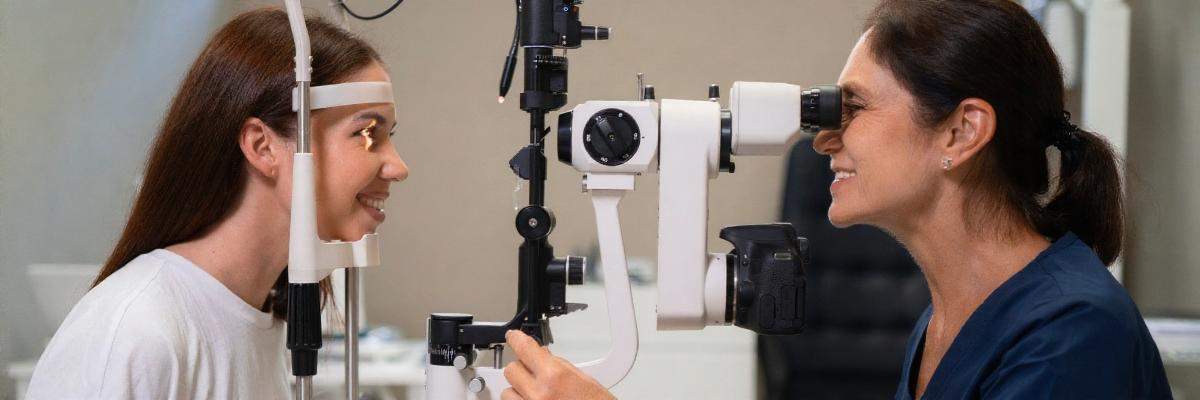Deciding to pursue laser vision correction is a significant step toward a life with less dependence on glasses or contact lenses. The two most proven and popular procedures are LASIK and PRK. While both can deliver outstanding results, the debate of LASIK vs PRK comes down to individual factors like your eye anatomy, lifestyle, and recovery preferences. Understanding the fundamental differences between these two advanced procedures is the first step toward having a productive conversation with your surgeon to determine the ideal path to clearer vision for you.
The distinguished ophthalmology specialists at Doral Health & Wellness provide comprehensive eye care, from routine exams to advanced surgical procedures. Our dedicated team utilizes state-of-the-art diagnostic and surgical technologies to deliver the highest standard of personalized treatment, ensuring you receive the guidance needed to achieve your best possible vision.
LASIK vs PRK: The Core Differences Explained
Both LASIK (Laser-Assisted In Situ Keratomileusis) and PRK (Photorefractive Keratectomy) reshape the cornea with an excimer laser to correct refractive errors like nearsightedness, farsightedness, and astigmatism. The primary difference lies in how the surgeon accesses the underlying corneal tissue.
The LASIK Procedure
With LASIK, the surgeon creates a thin, hinged flap in the outer layer of the cornea (the epithelium and part of the stroma) using either a microkeratome blade or a femtosecond laser. This flap is gently lifted, the laser reshapes the corneal tissue underneath, and the flap is then repositioned, where it self-seals without stitches.
The PRK Procedure
With PRK, the surgeon does not create a flap. Instead, the very thin outer layer of the cornea (the epithelium) is completely removed to expose the underlying tissue. The excimer laser then reshapes the cornea, and a protective, soft “bandage” contact lens is placed over the eye to aid in healing as the epithelial cells grow back over the next several days.
Determining Your Candidacy: Who is a Good Fit?
A thorough evaluation with an experienced eye doctor is essential to determine which procedure is safer and more appropriate for your eyes.
- Corneal Thickness – LASIK requires a certain amount of corneal thickness to safely create the flap. Patients with thinner corneas are often better candidates for PRK, as it preserves more corneal tissue.
- Dry Eye Syndrome – LASIK can sometimes temporarily worsen dry eye symptoms due to the creation of the corneal flap. Patients with pre-existing moderate to severe dry eye may be better suited for PRK.
- Lifestyle and Occupation – For individuals in high-contact sports (e.g., boxing, martial arts) or certain military or law enforcement roles, PRK is often recommended. This is because there is no corneal flap, eliminating the small but potential risk of flap dislocation from direct trauma to the eye.
Comparing the Patient Experience: Recovery and Discomfort
The most significant differences between LASIK and PRK are found in the recovery process.
LASIK Recovery
- Initial Discomfort – Mild, usually lasting only a few hours after the procedure. Patients may experience a scratchy or gritty sensation.
- Visual Recovery – Rapid. Most patients see clearly within 24 hours and can resume normal activities, including driving, the next day.
- Follow-Up – Involves using medicated eye drops for about a week.
PRK Recovery
- Initial Discomfort – More significant than LASIK. Patients can expect moderate discomfort, light sensitivity, and a foreign body sensation for the first 2-4 days as the epithelium heals.
- Visual Recovery – Slower and more gradual. Functional vision returns within the first week, but it can take several weeks to a few months for vision to become fully sharp and stable.
- Follow-Up – Requires wearing a bandage contact lens for about 5-7 days and using medicated eye drops for a longer period, sometimes several months.
Outcomes, Risks, and Considerations
Both procedures have excellent long-term visual outcomes, with the vast majority of patients achieving 20/20 vision or better. A consultation with an eye doctor in NY can provide personalized expectations.
- Risks – All surgeries carry risks, though they are rare with modern laser vision correction. With LASIK, there are flap-related risks, such as dislocation or inflammation. With PRK, a primary risk is corneal haze, a cloudiness that can temporarily affect vision during the healing period, though this is uncommon with modern techniques and medication protocols.
- Enhancements – In a small percentage of cases for both procedures, a follow-up or “enhancement” surgery may be needed to fine-tune the visual result.
- Cost – The cost of LASIK and PRK is generally comparable, though prices can vary. It is important to discuss what is included in the surgical fee.
When seeking the best ophthalmologist near me, be sure to choose a surgeon who performs both procedures and can offer an unbiased recommendation based on a comprehensive evaluation of your eyes.
Your Partner in Achieving Clear Vision
Choosing between LASIK vs PRK is a decision made in partnership with your ophthalmologist. While LASIK offers a faster, more comfortable recovery, PRK provides a safer alternative for individuals with thinner corneas, dry eyes, or high-impact lifestyles. Both are highly effective, life-changing procedures that can free you from the daily hassle of corrective lenses. A detailed consultation will ensure you select the option that promises the best and safest outcome for your unique eyes.
The expert ophthalmology team at Doral Health & Wellness provides personalized surgical consultations and utilizes state-of-the-art technology to deliver exceptional visual results. We will conduct a thorough evaluation to help you make an informed decision about your vision. To schedule a consultation, contact Doral Health & Wellness today at 1-718-365-2555 or visit us at 1797 Pitkin Avenue, Brooklyn, New York 11212. For general information about Doral Health & Wellness services, you can contact or email info@doralhw.org.






